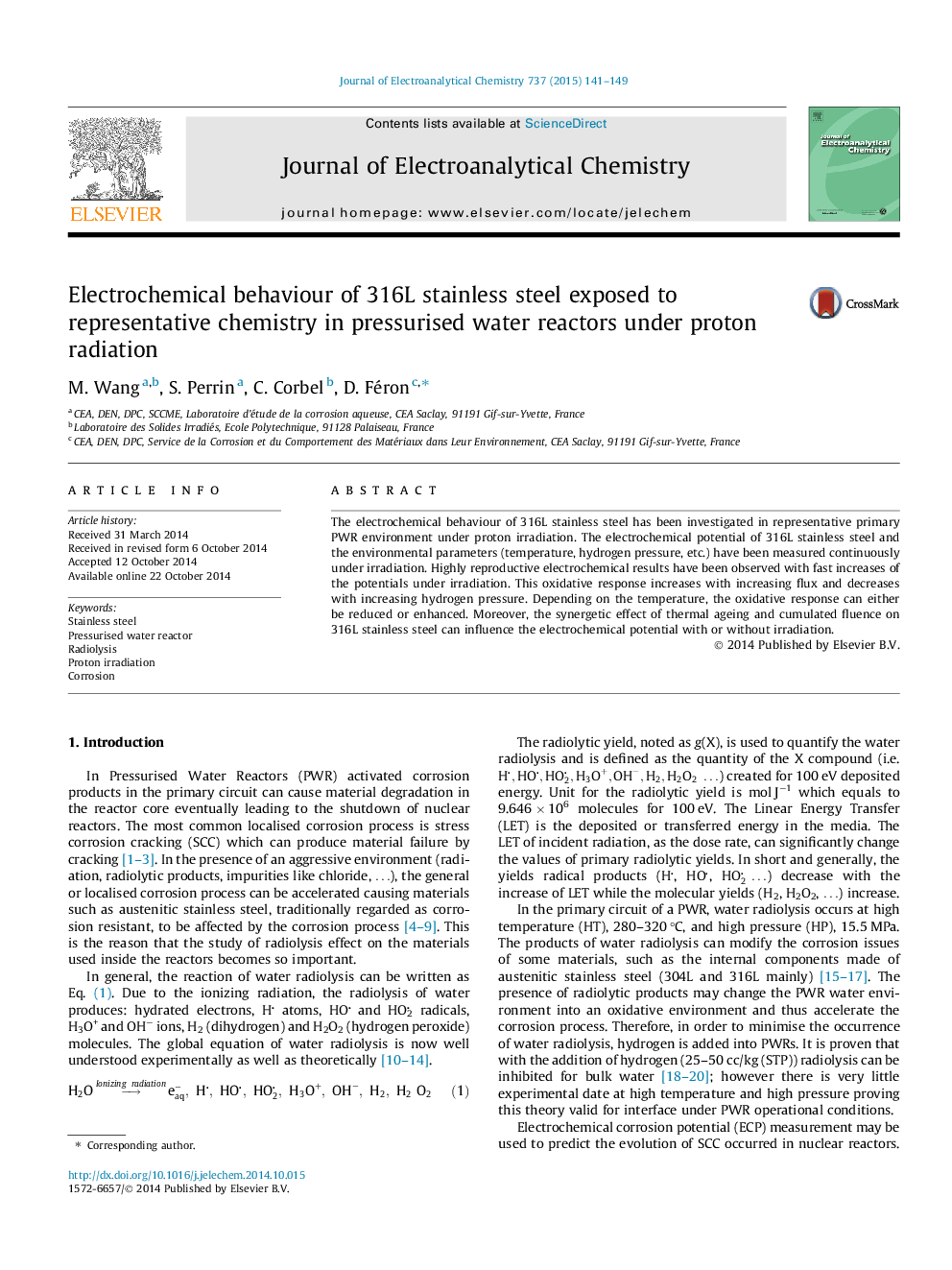| Article ID | Journal | Published Year | Pages | File Type |
|---|---|---|---|---|
| 218522 | Journal of Electroanalytical Chemistry | 2015 | 9 Pages |
•An oxidative response is observed under irradiation up to 300 °C.•An increase of hydrogen concentration reduces the oxidative response.•A synergetic effect of thermal ageing and fluence cumulation is observed leading to a decrease of the oxidative response.
The electrochemical behaviour of 316L stainless steel has been investigated in representative primary PWR environment under proton irradiation. The electrochemical potential of 316L stainless steel and the environmental parameters (temperature, hydrogen pressure, etc.) have been measured continuously under irradiation. Highly reproductive electrochemical results have been observed with fast increases of the potentials under irradiation. This oxidative response increases with increasing flux and decreases with increasing hydrogen pressure. Depending on the temperature, the oxidative response can either be reduced or enhanced. Moreover, the synergetic effect of thermal ageing and cumulated fluence on 316L stainless steel can influence the electrochemical potential with or without irradiation.
Graphical abstractFigure optionsDownload full-size imageDownload as PowerPoint slide
